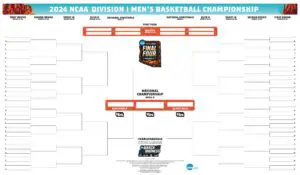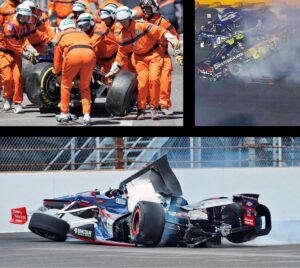Looking to pursue a thrilling career as a race car driver? Wondering how to apply for this adrenaline-fueled profession? Look no further! In this article, we will dive straight into the details on how you can turn your passion for speed into a reality. Buckle up and get ready to explore the necessary steps and requirements to kickstart your journey towards becoming a race car driver. From obtaining the right licenses to honing your skills on the track, we’ve got you covered. So, let’s rev up those engines and delve into the exciting world of race car driving!
How to Apply for Race Car Driver: A Comprehensive Guide
Becoming a race car driver is a dream shared by many. The thrill of speed, the adrenaline rush, and the prestige associated with the sport make it an appealing career choice for those with a passion for racing. However, breaking into the world of professional racing can be challenging, and knowing how to navigate the application process is vital. In this guide, we will walk you through the steps required to apply for a race car driver position, from obtaining the necessary licenses to showcasing your skills and experience.
Obtaining the Required Licenses
Before you can even think about applying for a race car driver position, you must meet the necessary licensing requirements. These licenses are essential as they demonstrate your competence and understanding of the technical and safety aspects of racing. Here’s a breakdown of the licenses commonly required:
Sports Car Club of America (SCCA) License
The SCCA license is one of the most recognized licenses for amateur and professional race car drivers in the United States. To obtain an SCCA license, follow these steps:
- Join the SCCA: Joining the SCCA requires completing an application and paying the membership fee. This allows you to participate in SCCA events and apply for a license.
- Attend a Racing School: Enroll in a reputable racing school that offers programs approved by the SCCA. These schools provide training in racing techniques, safety regulations, and vehicle dynamics.
- Pass the Written and Practical Exams: After completing the racing school program, you will need to pass both a written and practical exam to demonstrate your knowledge and skills in various racing scenarios.
- Apply for the SCCA License: Once you have successfully completed the racing school and exams, submit an application for an SCCA license. The application will require you to provide your racing history, references, and pay the licensing fee.
International Automobile Federation (FIA) License
The FIA license is essential for aspiring race car drivers looking to compete internationally. Here’s how you can obtain an FIA license:
- Establish Racing Experience: Before applying for an FIA license, gain experience and success in national racing events. This helps build your racing profile and demonstrates your abilities to the FIA.
- Apply to Your National Motorsports Authority: Contact your country’s National Motorsports Authority (NMA) to initiate the application process. Provide them with your racing history, achievements, and any supporting documents they may require.
- Examination and Evaluation: The NMA will evaluate your application and may require you to undergo an examination or practical assessment to assess your racing skills.
- International Racing Experience: Once you have obtained your national license, participate in international racing events to gain experience and visibility. Your performance in these events can greatly influence your chances of obtaining an FIA license.
- Apply for the FIA License: Once you have met the necessary criteria, submit your application for an FIA license to your NMA. They will review your application and make a decision based on their evaluation.
Building Your Racing Resume
Having the necessary licenses is just the beginning. To stand out in the highly competitive world of race car driving, you need to build a strong racing resume that highlights your skills, experience, and achievements. Here are some key components to include:
Driver Profile
Start by creating a driver profile that provides an overview of your background, including your racing disciplines, notable accomplishments, and personal information. This section allows potential sponsors and teams to get a quick snapshot of who you are as a driver.
Racing Experience
Outline your racing experience in detail, including the types of races you have participated in, the tracks you have competed on, and any notable achievements. Be sure to include any championships won, lap records set, or impressive finishes. This information helps demonstrate your ability to perform in high-pressure situations.
Skills and Specializations
Identify your specific skills and specializations within the realm of race car driving. Are you particularly skilled at endurance races? Do you excel in wet weather conditions? Highlighting these strengths will make you a more attractive candidate for teams or sponsors looking for drivers with specific expertise.
Training and Education
Provide details about any specialized training or education you have received related to race car driving. Include information about racing schools, coaching programs, or technical courses. This shows your commitment to continuous improvement and your dedication to honing your skills.
Sponsorship and Branding
Outline any sponsorship or branding relationships you have established. Include information about companies or brands that have supported your racing endeavors, as well as any promotional activities you have participated in. This demonstrates your ability to attract sponsors and work collaboratively with brands.
Networking and Making Connections
In the world of race car driving, building connections and networking can significantly enhance your chances of securing a race car driver position. Here are some strategies to help you expand your network:
Attend Motorsport Events
Make it a priority to attend motorsport events, including races, exhibitions, and trade shows. These events provide opportunities to meet industry professionals, including team owners, sponsors, and other race car drivers. Be sure to bring copies of your racing resume and business cards to distribute to potential contacts.
Join Racing Organizations and Clubs
Become a member of racing organizations and clubs to connect with like-minded individuals and industry insiders. These groups often host networking events, seminars, and workshops that allow you to engage with fellow enthusiasts and professionals.
Utilize Social Media
Leverage social media platforms to expand your reach and connect with the racing community. Share updates about your racing activities, engage with race car drivers and industry professionals, and participate in relevant conversations. Platforms like LinkedIn and Twitter are particularly useful for networking within the racing industry.
Volunteer and Offer Assistance
Offering your assistance at racing events or race teams can provide valuable opportunities to network and showcase your skills. Whether it’s helping with pit crew duties, assisting with car maintenance, or volunteering at charity events, these experiences can lead to connections and potential job opportunities.
Applying for Race Car Driver Positions
Once you have obtained the necessary licenses, built a strong racing resume, and made valuable connections, it’s time to start applying for race car driver positions. Here’s how to navigate the application process:
Research Race Car Teams
Conduct thorough research to identify race car teams that align with your racing goals and aspirations. Visit their websites, review their track records, and learn about their team culture and values. This will help you identify the teams that are the best fit for your racing career.
Submit a Strong Application
Carefully review the application requirements specified by the race car teams you are interested in. Ensure that you submit all the necessary documents, such as your racing resume, licenses, and any additional information requested. Tailor your application to highlight how you can contribute to the team’s success and showcase your unique skills and experiences.
Participate in Tryouts and Auditions
Some race car teams may require potential drivers to participate in tryouts or auditions to assess their skills and compatibility with the team. If invited, make sure you are well-prepared physically and mentally. Demonstrate your racing abilities, teamwork, and communicate effectively with team members and management.
Continued Improvement and Adaptability
Even if you don’t secure a race car driver position right away, it’s essential to continue improving your skills and adapt to changing racing trends. Stay up-to-date with the latest technological advancements, attend additional training programs, and compete in races to gain more experience. The racing industry is highly competitive, and your dedication to continuous improvement will make you a stronger candidate in the long run.
In conclusion, applying for a race car driver position requires a combination of skill, dedication, and perseverance. Obtaining the necessary licenses, building a strong racing resume, networking, and submitting compelling applications are key steps on your journey to becoming a professional race car driver. With careful preparation and a relentless pursuit of excellence, you can increase your chances of realizing your dream on the race track. Good luck on your racing endeavors!
HOW TO BECOME A RACE CAR DRIVER (How to get a racing license)
Frequently Asked Questions
How do I apply to become a race car driver?
To apply for a career as a race car driver, follow these steps:
1. Research racing schools and programs: Look for reputable racing schools that offer training programs specifically for aspiring race car drivers. These schools usually provide comprehensive courses that cover the fundamentals of racing and offer hands-on experience.
2. Obtain a racing license: To compete as a professional race car driver, you will need to acquire a racing license. The requirements for obtaining a license may vary depending on your location and the racing series you wish to participate in. Typically, you will need to complete a certain number of races as a rookie and demonstrate your skills to obtain the license.
3. Build a racing resume: Creating a comprehensive racing resume is crucial when applying for race car driving opportunities. Include your achievements, racing experience, and any relevant skills or certifications. Additionally, consider including references from coaches or trainers who can vouch for your abilities.
4. Network within the racing community: Attend racing events, join racing clubs, and participate in local racing competitions to expand your network. Building connections within the racing community can lead to potential opportunities and valuable guidance from experienced professionals.
5. Seek sponsorship opportunities: Racing can be an expensive sport, and securing sponsorships can help cover the costs of racing equipment, training, and participation fees. Research and approach potential sponsors who align with your racing goals and values. Prepare a compelling sponsorship proposal highlighting your skills, achievements, and the exposure you can offer to the sponsors.
6. Keep improving your skills: Continuous improvement and honing your racing skills are vital in the highly competitive world of race car driving. Attend advanced racing courses, practice regularly, and seek feedback from experienced professionals to enhance your performance on the track.
What qualifications do I need to become a race car driver?
While specific qualifications may vary depending on the racing series and level of competition, here are some common requirements to become a race car driver:
1. Age: Most racing organizations require drivers to be at least 16 to 18 years old, depending on the type of racing and the level of competition. However, aspiring professional drivers often start their training at a much younger age.
2. Racing License: To compete professionally, you will typically need to obtain a racing license. The requirements and criteria for obtaining a license may vary depending on the racing series and governing body.
3. Physical Fitness: Race car driving demands physical fitness to endure the high G-forces, extreme temperatures, and mentally demanding conditions. Developing a fitness routine that focuses on strength, endurance, and reflexes is crucial for race car drivers.
4. Driving Skills: Having excellent driving skills is essential. Besides basic driving abilities, you should possess exceptional car control, precise maneuvering, and the ability to make split-second decisions. Attending racing schools and engaging in regular practice can help develop your driving skills.
5. Racing Experience: Building racing experience is vital to demonstrate your capabilities. Participating in local racing events, karting competitions, or joining racing leagues can provide valuable experience and help you gain recognition in the racing community.
Do I need any prior racing experience to become a race car driver?
While prior racing experience can be beneficial, it is not always a prerequisite to becoming a race car driver. Many successful drivers have started their careers with little to no experience. However, having a strong foundation of driving skills, such as karting or participating in local racing events, can greatly enhance your chances of becoming a professional race car driver.
How can I find racing schools that offer training for aspiring race car drivers?
To find racing schools that offer training programs for aspiring race car drivers, you can follow these methods:
1. Online research: Conduct a search on the internet using relevant keywords like “racing schools for aspiring drivers” or “race car driving training programs.” This will provide you with a list of racing schools and training centers.
2. Racing forums and communities: Explore online racing forums and communities where experienced racers and enthusiasts share information and recommendations. Engage with the community and inquire about reputable racing schools they would recommend.
3. Local racing associations: Get in touch with local racing associations or clubs in your area. They often have information about racing schools or can direct you to resources that provide training for aspiring race car drivers.
4. Recommendations: Seek recommendations from other race car drivers, racing enthusiasts, or individuals working within the racing industry. Personal recommendations can often lead you to trustworthy and reputable racing schools.
What are the costs involved in becoming a race car driver?
Becoming a race car driver can involve various costs. Here are a few common expenses to consider:
1. Training and racing school fees: Attending racing schools and training programs comes with a cost. The fees can vary depending on the duration and quality of the training.
2. Racing license and membership fees: Acquiring a racing license typically requires payment of licensing fees. Additionally, some racing series or organizations may require drivers to be a member, which also entails associated fees.
3. Equipment and race car costs: Depending on the racing series, you may need to invest in your own race car or pay for its rental. Additionally, race car maintenance, upgrades, safety equipment (e.g., helmets, fire suits), and other gear need to be considered.
4. Travel and accommodation expenses: Racing often involves traveling to different tracks and locations. Budget for transportation, accommodation, and meals during these trips.
5. Entry fees: Participating in racing competitions often involves entry fees. The costs can vary based on the level of competition and the specific event.
6. Sponsorship packages: If you seek sponsorship, there might be costs associated with creating professional sponsorship proposals, marketing materials, and other promotional activities to attract potential sponsors.
It’s important to note that the actual costs can vary significantly depending on factors such as the level of competition you aspire to, the racing series you wish to participate in, and your geographical location.
Final Thoughts
To apply for a career as a race car driver, start by researching racing schools and programs that offer training and development opportunities. Attend racing events and network with industry professionals to gain exposure and make valuable connections. Practice and hone your driving skills by participating in local races and competitions. Create a professional racing resume highlighting your achievements, skills, and experience. Apply to racing teams or sponsors, showcasing your passion and dedication for race car driving. Continuously educate yourself about the sport and stay updated on industry trends to enhance your chances of becoming a successful race car driver. Apply for race car driving positions confidently, emphasizing your commitment, talent, and readiness to take on the thrilling challenges of racing. Good luck with your journey to become a race car driver!




